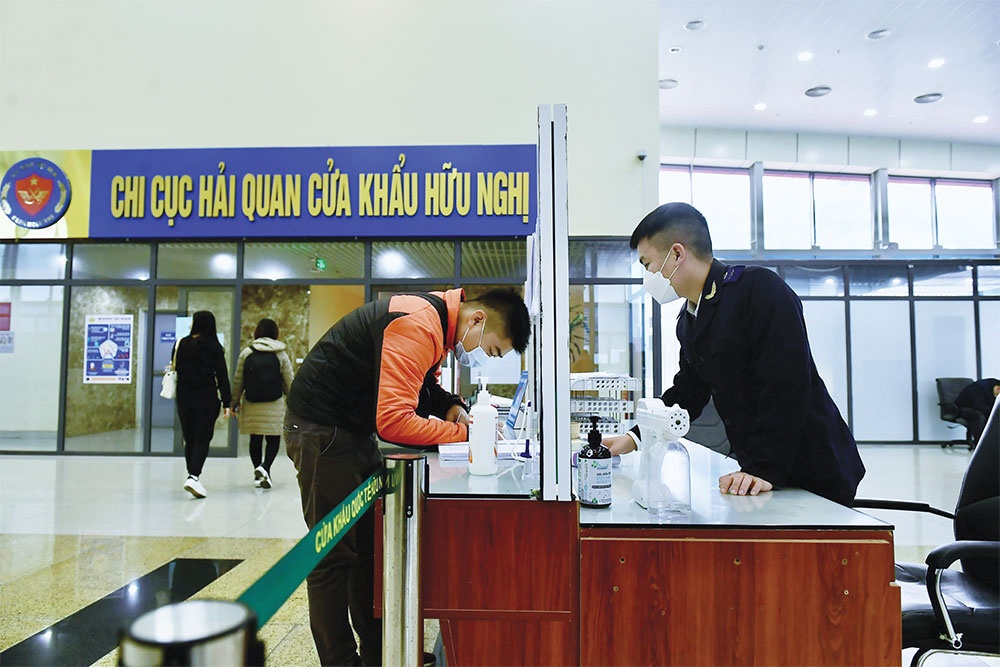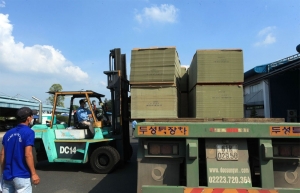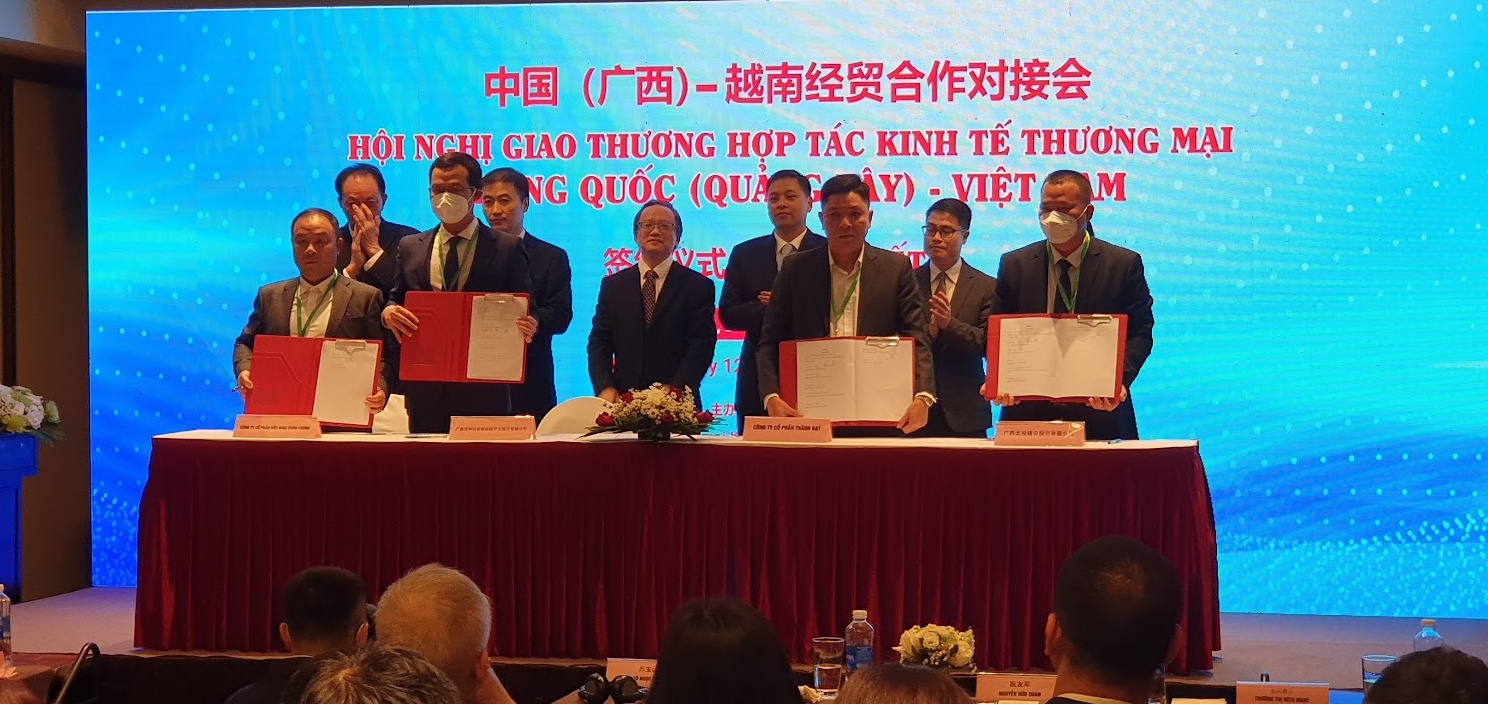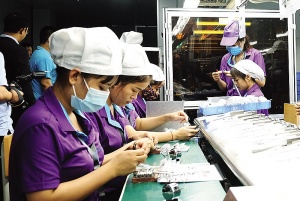The return of China: mostly positive news for Vietnam
China’s COVID-19 policy had become untenable: the virus had spread to 170 cities, and new mandatory quarantines triggered protests from exasperated citizens. On December 26, China’s National Health Commission announced it would downgrade the response level. Border crossings to enter China without mandatory isolation are now once again permitted.
 |
| Patrick Lenain, senior associate of the Council on Economic Policies |
This is good news for Vietnam, mostly. Chinese tourists will return, though not immediately. Trade flows across the border will operate more smoothly. But Vietnam will, once again, have to compete with Chinese provinces to attract foreign invested investment.
The reopening of China differs from the reopening elsewhere. In other countries, including Vietnam, the population was vaccinated and immunised, so reopening meant it was safe to interact, socialise, and travel.
People regained confidence, and economic activity jumped forward, especially in sectors that required face-to-face interactions, such as entertainment and transportation.
By contrast, China’s strategy was focused on mass testing and mobility restrictions rather than vaccination. The reluctance to grant approval to foreign vaccines for the local population meant that the authorities remained focused on suppressing the virus circulation, hoping the coronavirus would eventually become less lethal.
Bleak episode
The protracted period of isolation strained the population’s mental and social wellbeing, and residents began to demand the loosening of restrictive measures. In response, public health measures are being eased.
However, China is reopening when a large share of the population is not well immunised. Worryingly, just 60 per cent of the over 80-year-olds have received one injection, and only 38 per cent have received a booster shot.
A surge of severe infections is thus unavoidable, putting pressure on hospitals’ emergency services. Although the information is scant, it is likely that people are avoiding social interactions as they seek to protect themselves and their family members.
This is already weighing down on economic growth. Indicators of manufacturing activity recently fell as rapidly spreading infections grounded workers in factories, disorganised logistics and deliveries, and dampened demand.
China’s manufacturing Purchasing Managers’ Index, which covers the service sector and construction activity, plunged to 41.6 in December. When this index falls below 50, it implies contraction. After the slowdown of activity in the fourth quarter of last year, additional economic weakness is widely expected in the first quarter of this year.
This makes forecasters wonder whether China will be an engine of global growth in 2023. China is a key trade partner for most countries – it imports large amounts of commodities, equipment, and intermediate inputs for its supply chain. China is Vietnam’s second-largest export market, making its uninterrupted growth crucial for many Vietnamese companies.
The short-term outlook for China is bleak, but growth will resume. Millions will get sick, herd immunity will prevail, and economic activity will rebound sharply. China will learn to live with the virus, as other countries have.
Consumer confidence will return, and the demand for goods and services will increase. Reopening in other countries has seen a period of “revenge spending”, with consumers eager to catch up with their shopping and use their accumulated savings. Investment growth will also pick up, supported by continued infrastructure spending and improved investor sentiment.
In light of the reopening, many forecasters now see a strong V-shaped rebound from mid-2023, led by private consumption. These forecasters have revised up their outlook and now project an acceleration of China’s growth to 4.7 per cent in 2023.
The reopening is accompanied by important reforms. In particular, the government has indicated support for the private sector in key communicative guidance.
The release from the recent Central Economic Work Conference – a 2-day meeting during which members of the government and the party discuss economic policy priorities in the coming year – signalled a change of tone in favour of the private sector.
It emphasised that state-owned enterprises and private enterprises will be treated equally before the law, while public policies will support the growth of the private economy and private enterprises. This is a significant evolution from its emphasis of 2021.
In addition, expanding domestic demand, in particular raising consumption and resident income, was given top priority among the five policy goals.
Several policy advancements seem to back up the shift in tone. Over the last year, China rolled out support measures for the property sector. These measures allowed selected developers to extend their borrowing while stabilising the housing market to cushion the negative effects of the sector’s restructuring.
Moreover, the country’s banking and security regulator approved Ant Group’s online lending subsidiary to expand its registered capital by $1.5 billion. The stock market interpreted this step as a changing stance in support of platform companies and responded with a broad-based rally led by e-commerce firms such as Alibaba and Pinduoduo. The property sector and the platform economy were among the most embattled sectors in the past three years. Vietnamese exporters should therefore prepare for a rebound of their shipments to China.
A large part of bilateral trade, about $56 billion in 2021, consists of inputs used in the supply chain, such as electronic components. The return to normal operations in China will boost these flows of intermediate inputs between the two countries. The demand for products entirely made in Vietnam, such as agricultural products and seafood, will jump as Chinese consumers boost their spending.
 |
| While Vietnam relaxed its pandemic measures early in 2022, China decided on a much more restrictive policy for a longer period of time. Photo: Le Toan |
Tourism can recover
Thanks to the reopening, millions of Chinese tourists will eventually return to Bangkok, Hanoi, Paris, and Phuket. The return of visitors from China is very much hoped for in these tourist hotspots. Before the pandemic, they were fuelling the hospitality and entertainment sectors and the sales of luxury goods in shopping malls.
The return of Chinese tourists is, for now, slowed by entry restrictions – such as proof of a negative coronavirus test and random testing upon arrival – in fear that new virus mutations could emerge and start new outbreaks. Without new deadly variants, these travel restrictions will be lifted, and international travel will resume.
This is crucial for Vietnam, which relies on tourism and received 5.8 million Chinese visitors in 2019. Still, patience is required. A return to past inflows of visitors will not happen overnight. Tourism has yet to return to past levels in Europe and the United States, where travel restrictions were lifted in early 2022.
Airports, hotels, restaurants, and entertainment centres are not fully functioning. The tourism sector is a complex business with long lags, which takes time to be cranked up. Adding more challenges, Russian tourists are unlikely to return to Vietnam anytime soon. Hopefully, Vietnam’s tourism sector will regain its past prosperity by 2024 or 2025
A strong economic rebound in China will be a major event for the world economy in 2023. It will fill the gap left by faltering demand in Europe caught in the clouds of war, and in the United States, where tight monetary policy will contribute to a shallow recession. But it will complicate central banks’ efforts to tame inflation.
A substantial importer of commodities, China’s recovery will once again push up the global prices of oil, natural gas, metals, and food. Global inflation has started declining in recent months, but this could be reversed if commodity prices increase again. Instead of halting their hikes in interest rates, policymakers at the US Federal Reserve, European Central Bank, and Bank of England would then have to postpone monetary easing. High-interest rates set by these central banks are prone to create difficulties for emerging market economies like Vietnam.
They increase the cost of debt service by governments and corporate borrowers. They also encourage a return of capital flows towards markets in advanced economies, which can put downward pressure on the currencies of emerging market economies, as seen by the rapid – though temporary, depreciation of VND in terms of the US dollar in late 2022.
China’s pandemic strategy has challenged the country’s lustre as a reliable manufacturing hub.
Doing business in China looks more hazardous, as illustrated by disrupted work at factories operated by Tesla and Foxconn.
Some multinational companies, such as Apple, are now interested in diversifying their production sites to avoid the risk of further disruptions, and Vietnam is an appealing place for such investors. Yet, China is unlikely to be replaced as an attractive investment destination. It has not yet met rivals regarding workforce, skills, logistics, and technology. It is a huge and fast-growing internal market that multinationals cannot ignore.
A successful return to an open, efficient, and attractive China is in the interest of all nations. Close economic cooperation between Vietnam and China will benefit the prosperity of both countries.
 | Trade possibilities restored as China softens restrictions It is anticipated that reopening of China’s border could somewhat alleviate Vietnam’s sluggish import and export positions. |
 | China's BYD to construct $200 million plant in Vietnam Chinese carmaker BYD Auto Co has a plan to construct a car-part manufacturing plant in Vietnam. |
 | Vietnam-China trade conference resumes after three-year hiatus From January 10 to 13, a delegation from the Chinese province of Guangxi visited Vietnam for a range of economic and trade development activities. |
 | Hopes rise for blossoming foreign investment in Vietnam The Foreign Investment Agency (FIA), under the Ministry of Planning and Investment, has said that overseas funding into Vietnam is expected to soar this year. |
What the stars mean:
★ Poor ★ ★ Promising ★★★ Good ★★★★ Very good ★★★★★ Exceptional
Related Contents
Latest News
More News
- PM orders investment model for North–South high-speed rail (December 22, 2025 | 17:43)
- First members of Danang International Finance Centre revealed (December 22, 2025 | 17:39)
- Securing capital and efficiency for Vietnam’s 2026-2030 growth ambitions (December 17, 2025 | 10:00)
- Driving double-digit growth through green and circular transformation in Vietnam (December 17, 2025 | 09:00)
- Vietnam bucking trend in the global M&A landscape (December 16, 2025 | 14:20)
- Vietnam’s green transition demands collective financial action (December 15, 2025 | 12:00)
- VIR workshop highlights capital and policy for sustainable development (December 15, 2025 | 11:00)
- National Assembly approves pilot mechanisms to accelerate major projects in Hanoi (December 12, 2025 | 11:29)
- Vietnam eases policy approval requirements, simplifies foreign and outbound investments (December 11, 2025 | 17:53)
- Unpacking new momentum in Vietnam’s M&A market (December 10, 2025 | 09:59)

 Tag:
Tag:


















 Mobile Version
Mobile Version